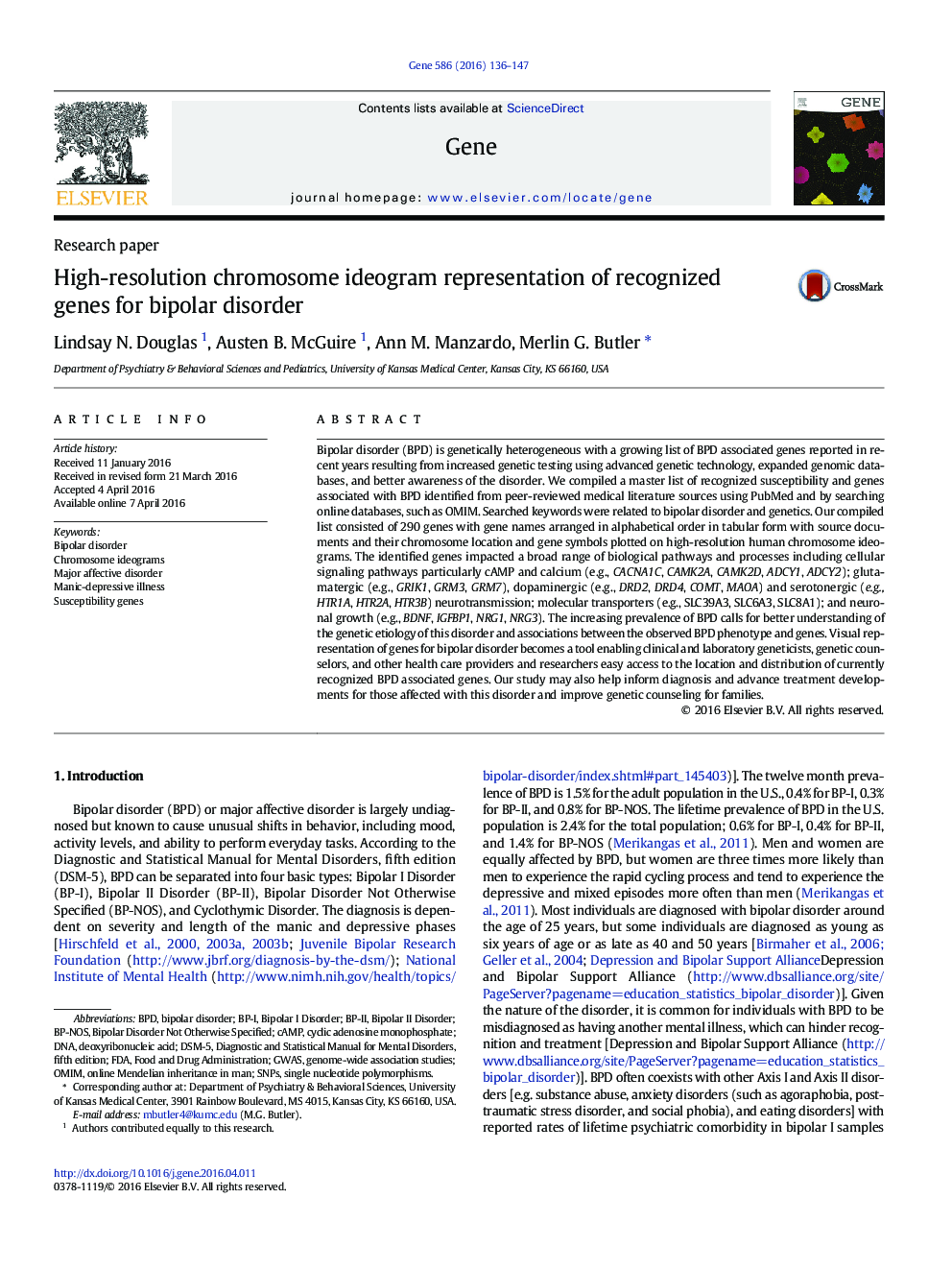| کد مقاله | کد نشریه | سال انتشار | مقاله انگلیسی | نسخه تمام متن |
|---|---|---|---|---|
| 2815089 | 1159849 | 2016 | 12 صفحه PDF | دانلود رایگان |
• Provides a current list of 290 clinically relevant genes for bipolar disorder
• Gene loci and distribution visualized on high resolution chromosome ideograms.
• Gene overlap with neuronal growth, cell signaling and neurotransmitter pathways
• The work provides a useful resource to guide research, diagnosis, and treatment.
Bipolar disorder (BPD) is genetically heterogeneous with a growing list of BPD associated genes reported in recent years resulting from increased genetic testing using advanced genetic technology, expanded genomic databases, and better awareness of the disorder. We compiled a master list of recognized susceptibility and genes associated with BPD identified from peer-reviewed medical literature sources using PubMed and by searching online databases, such as OMIM. Searched keywords were related to bipolar disorder and genetics. Our compiled list consisted of 290 genes with gene names arranged in alphabetical order in tabular form with source documents and their chromosome location and gene symbols plotted on high-resolution human chromosome ideograms. The identified genes impacted a broad range of biological pathways and processes including cellular signaling pathways particularly cAMP and calcium (e.g., CACNA1C, CAMK2A, CAMK2D, ADCY1, ADCY2); glutamatergic (e.g., GRIK1, GRM3, GRM7), dopaminergic (e.g., DRD2, DRD4, COMT, MAOA) and serotonergic (e.g., HTR1A, HTR2A, HTR3B) neurotransmission; molecular transporters (e.g., SLC39A3, SLC6A3, SLC8A1); and neuronal growth (e.g., BDNF, IGFBP1, NRG1, NRG3). The increasing prevalence of BPD calls for better understanding of the genetic etiology of this disorder and associations between the observed BPD phenotype and genes. Visual representation of genes for bipolar disorder becomes a tool enabling clinical and laboratory geneticists, genetic counselors, and other health care providers and researchers easy access to the location and distribution of currently recognized BPD associated genes. Our study may also help inform diagnosis and advance treatment developments for those affected with this disorder and improve genetic counseling for families.
Journal: Gene - Volume 586, Issue 1, 15 July 2016, Pages 136–147
